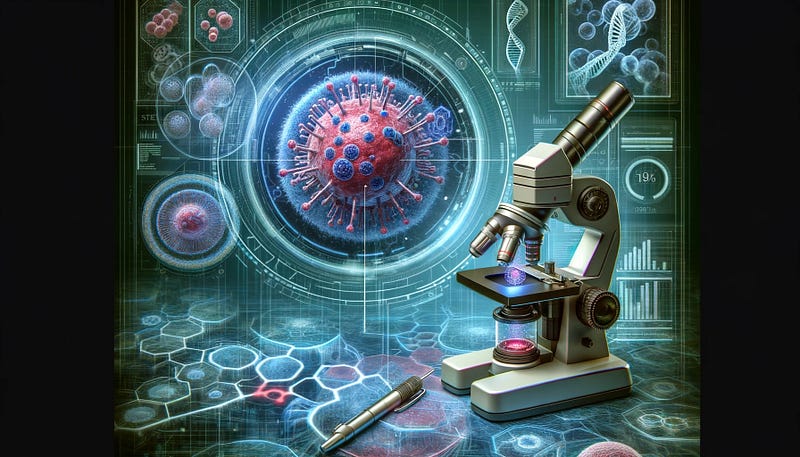Transforming the Future : 10 Emerging technologies

Yesterday, I introduced five technologies, so today I’d like to present the remaining five.
If you’re interested, please also check out my previous article.
6. Wearable Plant Sensors: A Revolution in Agriculture

Wearable plant sensors represent one of the latest technologies in agriculture, directly attaching to crops and monitoring their growth conditions in real-time.
These devices collect vital information such as moisture levels, nutritional status, and growth rates, contributing to the efficiency and optimization of agricultural production.
But why does this technology have a significant impact on agriculture?
Let’s first look at the challenges faced by agriculture:
Current challenges in agriculture:
Unpredictable weather conditions : Leading to unstable growth and harvest yields.
Lack of efficient resource utilization: Wastage of water and fertilizers, impacting the environment.
Difficulty in early detection of pests and diseases: Leading to widespread damage due to delayed discovery.
How do wearable plant sensors solve these challenges?
Solutions provided by wearable plant sensors:
Real-time monitoring of growth conditions: Accurate crop status assessment independent of weather conditions.
Efficient use of resources: Reducing environmental burden through appropriate water and fertilizer usage.
Early detection and management of pests and diseases: Minimizing crop loss with prompt responses.
Thus, this technology significantly contributes to the sustainability, efficiency, and quality of agricultural production, reducing the workload of farmers and promoting environmentally friendly farming practices.
7. Special Omics: Unraveling the Mysteries of Diseases with Astonishing Technology

Special omics is an innovative technology enabling detailed analysis at the molecular level of cells and tissues.
This technology facilitates a deeper understanding of complex molecular interactions and locations within cells, offering new insights into disease causes and treatment methods.
The impact of special omics on healthcare is based on how it addresses current medical technology challenges:
Current challenges faced by medical technology:
Difficulty in identifying the exact causes of diseases: Traditional medical practices often struggle to pinpoint precise disease causes due to the complex nature of illnesses and patient variability.
Limitations of uniform treatment approaches: Current treatments are generally based on a one-size-fits-all approach, making it challenging to customize treatments for individual patients and specific disease types.
Difficulties in early disease detection: Early detection, crucial for effective treatment, is often challenging with current technology.
Solutions provided by special omics:
Accurate identification of disease causes at the molecular level: Special omics enables detailed analysis at the cellular and tissue molecular level, allowing for more accurate disease identification.
Development of personalized treatment methods: Based on detailed molecular information, it’s possible to develop customized treatment plans for each patient.
Early disease detection and prevention: Early detection of molecular changes enables the early identification of diseases, allowing for preventive interventions.
Thus, special omics solves several challenges faced by current medical technology, offering more precise and personalized medical care, and bringing significant transformation to the healthcare sector.
8. Flexible Neural Electronics: A New Era in Neurological Disease Treatment

Flexible neural electronics is an innovative technology that enables direct interfacing with the human nervous system.
This allows for the precise and real-time monitoring of neural activity, providing unprecedented approaches to treating neurological disorders.
This technology is expected to significantly impact the understanding and development of effective treatments for the nervous system.
The challenges currently faced by traditional techniques and the solutions provided by flexible neural electronics are as follows:
Challenges:
Difficulty in precise observation of neural activity: Traditional methods fall short in capturing the intricate workings of the nervous system, limiting the understanding of the causes and treatments of neurological disorders.
Limited treatment options for neurological disorders: Few effective treatments are available for many neurological disorders, making rehabilitation and functional recovery challenging.
Lack of direct brain-machine interfaces: The technology for converting brain signals directly into mechanical actions is still developing, limiting its application range.
Solutions:
High-precision neural monitoring: Flexible neural electronics allows for the real-time observation of minute neural activities, deepening the understanding of the nervous system.
Development of new treatments for neurological disorders: This technology provides new methods for directly addressing the causes of neurological disorders, assisting in the recovery and rehabilitation of damaged nerves.
Realization of brain-machine interface : Directly transmitting brain signals to machines, this technology enables applications like the recovery of lost motor skills and advanced prosthetic control.
Flexible neural electronics is a groundbreaking advancement in neuroscience and healthcare, potentially ushering in a new era of neurological disease treatment.
9. Sustainable Computing: Eco-friendly Data Centers

Sustainable computing is a technology aimed at minimizing the environmental impact of data center operations. This technology addresses the challenges of high energy consumption, inefficient cooling systems, and environmental impacts faced by data centers.
Challenges in the absence of current technology:
High energy consumption: Traditional data centers consume a large amount of energy, contributing to air pollution and greenhouse gas emissions.
Inefficiency of cooling systems: Data center cooling requires a significant amount of energy, heavily influencing overall energy consumption.
Environmental impact: Energy consumption and cooling systems negatively affect the environment, leading to the depletion of water resources and impacts on ecosystems.
Solutions offered by sustainable computing:
Improvement in energy efficiency: The introduction of energy-efficient hardware and optimized data processing algorithms reduces energy consumption.
Innovative cooling technologies: Efficient thermal management technologies and the use of natural cooling systems decrease energy consumption and lessen environmental impacts.
Utilization of sustainable energy sources: The use of renewable energy and energy recovery systems minimizes the carbon footprint of data centers.
Thus, sustainable computing transforms data center operations into environmentally friendly practices, significantly contributing to the development of sustainable digital infrastructure.
10. AI in Healthcare Promotion: Utilizing Advanced Technology for Improved Efficiency and Quality in Healthcare

AI in healthcare promotion is an approach that uses cutting-edge technology to improve efficiency and quality in the medical field. This technology has the potential to revolutionize the analysis of vast medical data, disease diagnosis, treatment planning, and patient monitoring.
The current healthcare system requires significant time and resources for these processes, facing major challenges, particularly in rapid diagnosis and effective treatment planning.
The reasons for the significant impact of AI in healthcare promotion are based on its ability to solve the following challenges faced by current technology:
Challenges in the absence of current technology:
Delays and inaccuracies in diagnosis: Traditional medical systems often take time to diagnose, sometimes leading to inaccurate diagnoses.
Difficulties in optimizing treatment plans: Creating treatment plans that consider individual patient specificity is complex and resource-intensive.
Limitations in patient monitoring: Efficient patient state monitoring relies on human resources and has its limitations.
La Solutions provided by AI in healthcare promotion:
Rapid and accurate diagnosis: AI analyzes large amounts of data quickly and supports accurate diagnoses, paving the way for early treatment.
Personalized treatment planning: AI rapidly formulates individualized treatment plans, leading to more effective treatment.
Efficient patient monitoring: The use of AI enables continuous and detailed patient monitoring, improving treatment quality and patient health management.
These solutions demonstrate that AI in healthcare promotion enhances diagnostic accuracy, individualizes treatment plans, and optimizes patient monitoring, thus improving the overall efficiency and effectiveness of the healthcare system.
Finally, I’m aiming for 10,000 followers, so if you like the article, it will be very encouraging if you can follow me, comment, clap, etc. Thank you from the bottom of my heart for your support.
